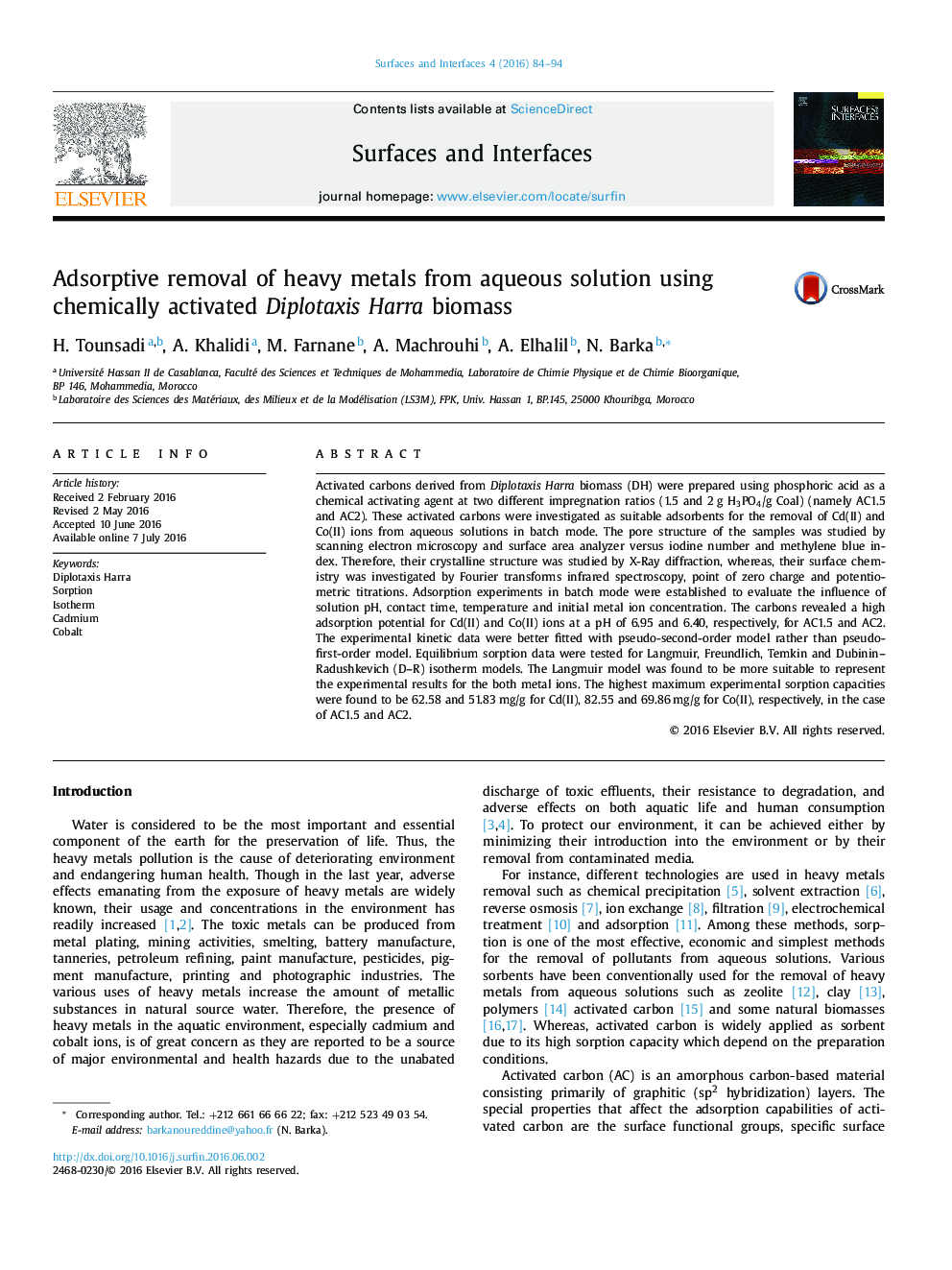| Article ID | Journal | Published Year | Pages | File Type |
|---|---|---|---|---|
| 4985708 | Surfaces and Interfaces | 2016 | 11 Pages |
Abstract
Activated carbons derived from Diplotaxis Harra biomass (DH) were prepared using phosphoric acid as a chemical activating agent at two different impregnation ratios (1.5 and 2Â g H3PO4/g Coal) (namely AC1.5 and AC2). These activated carbons were investigated as suitable adsorbents for the removal of Cd(II) and Co(II) ions from aqueous solutions in batch mode. The pore structure of the samples was studied by scanning electron microscopy and surface area analyzer versus iodine number and methylene blue index. Therefore, their crystalline structure was studied by X-Ray diffraction, whereas, their surface chemistry was investigated by Fourier transforms infrared spectroscopy, point of zero charge and potentiometric titrations. Adsorption experiments in batch mode were established to evaluate the influence of solution pH, contact time, temperature and initial metal ion concentration. The carbons revealed a high adsorption potential for Cd(II) and Co(II) ions at a pH of 6.95 and 6.40, respectively, for AC1.5 and AC2. The experimental kinetic data were better fitted with pseudo-second-order model rather than pseudo-first-order model. Equilibrium sorption data were tested for Langmuir, Freundlich, Temkin and Dubinin-Radushkevich (D-R) isotherm models. The Langmuir model was found to be more suitable to represent the experimental results for the both metal ions. The highest maximum experimental sorption capacities were found to be 62.58 and 51.83Â mg/g for Cd(II), 82.55 and 69.86Â mg/g for Co(II), respectively, in the case of AC1.5 and AC2.
Related Topics
Physical Sciences and Engineering
Chemical Engineering
Colloid and Surface Chemistry
Authors
H. Tounsadi, A. Khalidi, M. Farnane, A. Machrouhi, A. Elhalil, N. Barka,
